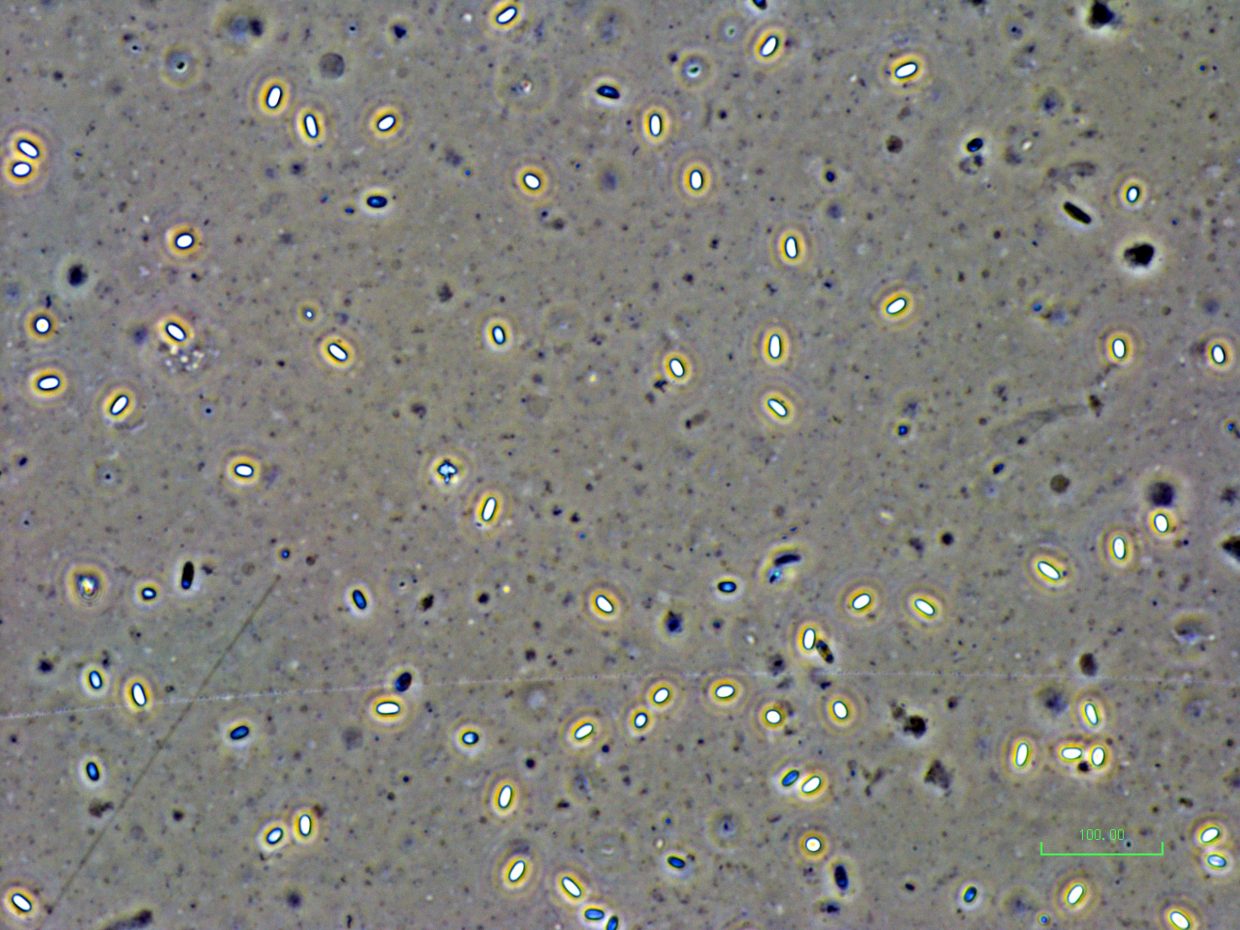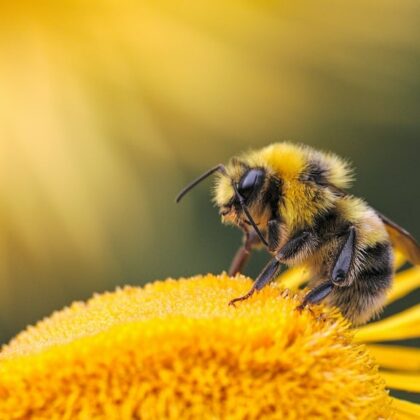Bees with a drinking problem
The latest Paper of the Month for Parasitology is “Honey bees with a drinking problem: potential routes of Nosema ceranae spore transmission” and is available open access.
The honey bee (Apis mellifera L.) is the world’s most intensively managed pollinator required for the pollination of many delicious fruits and vegetables, as well as high-value cash crops. Unfortunately, the health of this pollinator is threatened by several stressors, one of which is the presence of a variety of parasites and pathogens. Nosema ceranae, a highly specialized parasitic fungi measuring just ~5mm in length, is one of these pathogens.

Adult honey bees become infected with N. ceranae after unknowingly ingesting its hardy spores – potentially through food-sharing or consumption, or a fecal-oral route. Once the spores have been ingested, they make their way down to the midgut where conditions are perfect for reproduction and development. Being highly specialized, N. ceranae lacks mitochondria, which means that during development the pathogen steals energy directly from the honey bee. This, accompanied with the mechanical damage caused by new mature spores EXPLODING out of midgut cells have major consequences for the honey bee. Individuals infected with N. ceranae have been shown to forage precociously, and can experience impaired flight as well as a reduced nursing ability and lifespan, oh my!
Only one registered product is available to treat N. ceranae infections. Unfortunately, this product isn’t effective against the infective spore stage of the pathogen. Because our understanding of how the pathogen is transmitted is incomplete, it is difficult to develop novel control strategies that could address management concerns such as equipment decontamination and pathogen spread among colonies
Historically, N. ceranae was thought to be a thermotolerant and cold intolerant pathogen, making its persistence in both warmer, and colder climates enigmatic. However, this narrative was largely driven by studies looking at the survival of N. ceranae spores under laboratory conditions rather than conditions relevant to honey bees. Our group suspected that N. ceranae spores were capable of surviving for quite some time in substances (especially the sugary liquid ones) commonly encountered by honey bees, even at -20°C (!), and that this was the reason for the pathogen’s persistence in colder climates.
We decided to evaluate the survival of N. ceranae spores, and their ability to infect individual bees after storage in two liquids at four temperatures (33, 20, -12 and -20°C) commonly encountered by honey bees in colder climates: water and 2M sucrose (the type of sugar syrup that beekeepers feed their bees in the fall to ensure they don’t starve over winter), over a six-week period. We found that spores had high survival in both water and 2M sucrose, except in water at -20°C. Although we found that N. ceranae’s ability to infect was variable, spores were still infective at the end of the experiment at all four temperatures in both liquids. These findings provided evidence for cold tolerance, and suggested that both water and 2M sucrose could act as potential routes of transmission for N. ceranae. Based on these findings, we recommended that beekeepers supplying water or 2M sucrose to colonies supply the liquids individually in feeders rather than communally in barrels. This is especially true for 2M sucrose, a valuable resource to colonies in the fall. We also recommended that beekeepers not recycle any leftover 2M sucrose, and use robbing screens to prevent colonies from robbing one another of their 2M sucrose during the fall when it is being applied.
Individual honey bee consuming treated N. ceranae spores in sucrose.
The paper “Honey bees with a drinking problem: potential routes of Nosema ceranae spore transmission” by Courtney MacInnis, published in Parasitology, is available open access.






